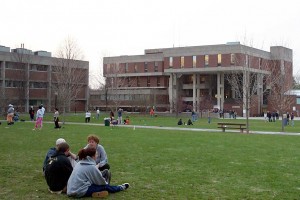Reading Summary 6: Better Online Living through Content Moderation
The article, “Better Online Living through Content Moderation”, People have the option to block or restrict certain content that they do not want to have in their lives. In certain cultures victim’s abuse online is not treated with the intensity that it should. Online bullying provokes violence and caused a great amount of stress to victims. The writer argues that people should not have to explain, or get ridiculed if they decide to block certain things from their online experience. People should not have to be forced to accept being labeled as weak and sensitive. Online bullying is not the same as exposure therapy. Exposure therapy is used to gradually combat anxiety through exposure. Online bullying is not therapeutic. Online bullying is random unnecessary attacks against people who want relief from the harassment they receive. People should have a say in how their personal story is being portrayed online so there are options to block and ways to limit what others can see.
The writer also states that the public is not informed in the ways a person can get PTSD. Most people believe only veterans can contract PTSD. Bullying has a severe impact on mental health. Symptoms from PTSD are depression and even suicide. PTSD from bullying can be prevented or blocked from content control. The misconception of online harassment causes hurt and mental problems.
Some people are opposed to blocklists. They feel as though their internet experience is being hindered because of another person. Although they may not be involved in the bullying process they are still opposed to blocking. Online bullying is very vicious and can be constantly persistent. Gamergate threatens people into silence. They will also go as far as threatening a person’s family members. Content control allows victims to protect themselves from the vicious people who sit behind their computers. One of the best things victims can do is to takes the necessary steps to keep them safe physically and mentally. Intimidating tactics designed to silence people is illegal.
Women are large targets for online bullying . Women who are in male dominated areas are more subject to sexism and harassment. Sexism online is not something a woman should just “get over”. Women may want to go online and enjoy games just as a man would, possibly to get away from sexism and harassment in real life. Dealing with the constant bombardment of threats and negativity can definitely cause PTSD for women.
Blocking is not a silencing tactic but is a way to shelter those who have been victimized. The writer suggests that people should be in charge of their own online experience. Those who are against blocking lack empathy for those experiencing trauma. Most people do not think of those with mental problems and those who are not like them. People do not think about other’s mental state so they tend not to care about feelings other than their own.
Online harassment can be stopped if individuals were more sensitive to the lives of others.


Recent Comments